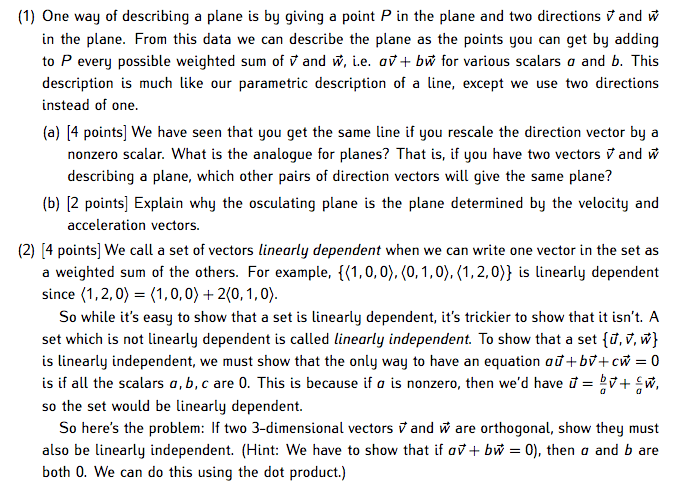MATH 1ZC3 Lecture Notes - Lecture 5: Becquerel, Laplace Expansion, Row Echelon Form
Document Summary
In checking for linear independence, we initially learned how to do so by solving a system of equations in a very primitive manner: eg. #1 - first version. Remember, a set of vectors is linearly independent if the only zero combination is the trivial one. That is, given our three vectors: au + bv + cw = 0 if and only if each of the real coefficients a, b and c are zero. From this we conclude we need to parameterize c, so we get: a = 2t , b = t, c = t. This is clearly not just the trivial (zero) solution, but an entire parameterized family. As you can see, this works, but it could potentially get very, very long, confusing and clumsy if we had generated a more complicated system. After 8. 2, we are in a position to solve this in a more efficient and generalizable manner: gauss-





